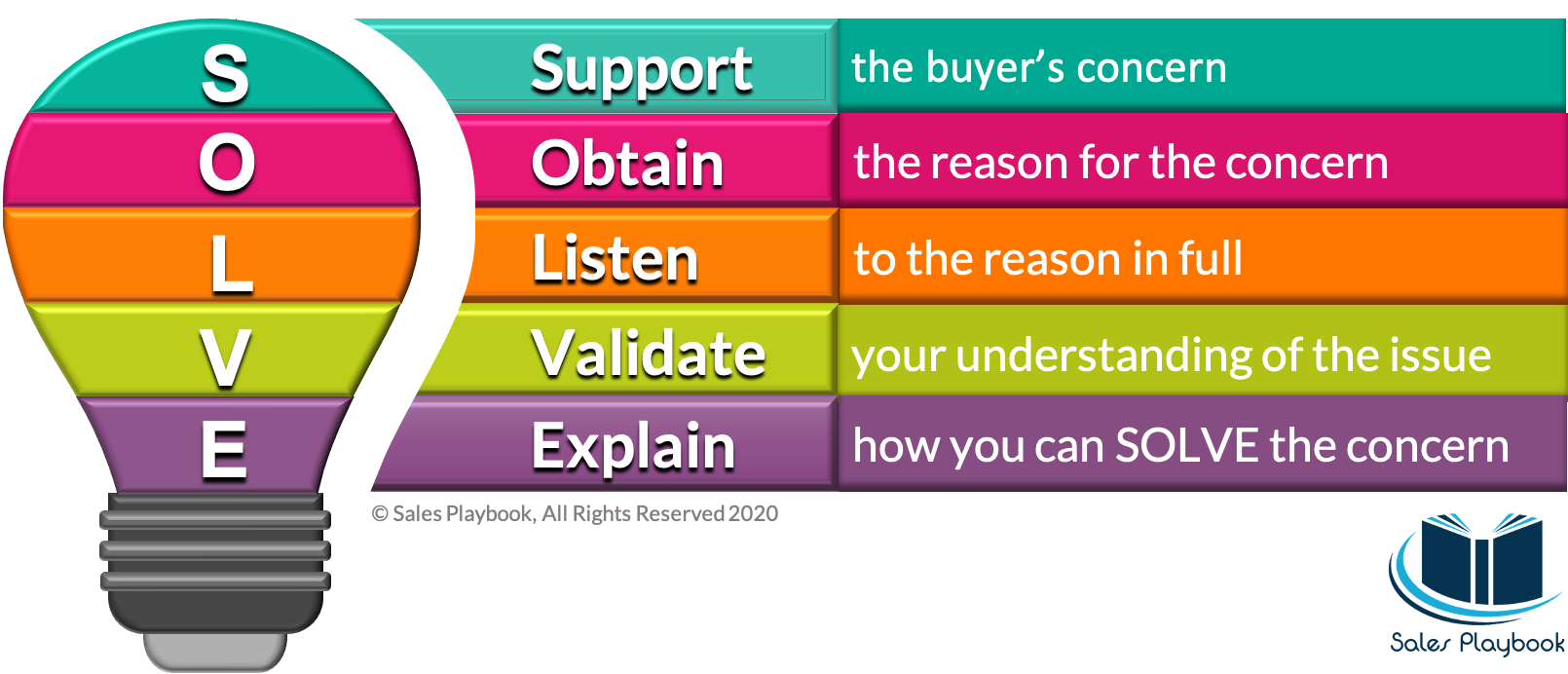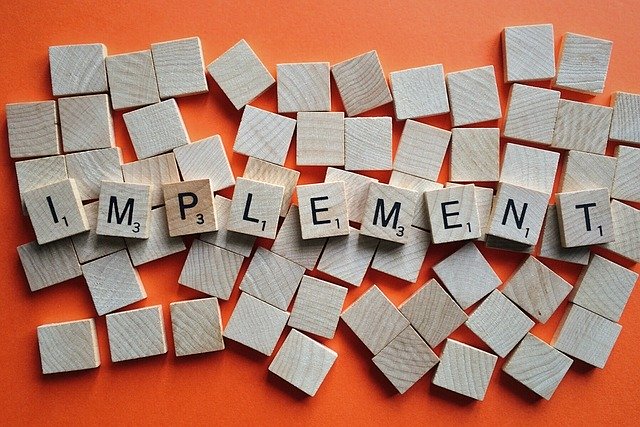
If you were to ask sales professionals to name a popular framework for lead qualification, you would more than likely get one, two or maybe even three mentioned. However, it’s unlikely you would get the same response if you asked sales professionals to name frameworks for objection handling.
One of the biggest obstacles a sales professional will encounter is managing buyers’ objections. When a customer puts forward an objection, some sales reps can become defensive and start justifying the features or benefits of their company’s product or service, others will just accept the objection straight away and move on to the next prospect on the list. These responses are missed opportunities.
Most sales champions won’t see objections as a problem, but as a sign that the buyer is interested enough to raise the objection in the first place. Every prospect a sales rep interacts with will have an objection or hesitation to make a purchase. If they didn’t have one, they would have already purchased the product or service by now.
Dealing with objections during your sales career is unavoidable and the key to dealing with objections is to take the time to understand why the prospect is objecting. Uncovering what the objections are will potentially lead to both parties moving forward in a beneficial way, so responding well to an objection and doing so in a respectful manner can be a huge step towards closing the sale.
Having a framework laid out for sales professionals to use will give them structure and guidance to handle objections. Companies may know that there are frameworks out there to help with this, so let’s take a look at a few in this article.
Objection Handling Acronyms
An acronym-based framework is a great way for a business to lay out how to tackle objections, but in order for this to stick it really needs to be meaningful and memorable.
The objection handling framework should be included in a company’s Sales Playbook.
- ARC = Acknowledge, Respond, Close
The ARC acronym is easy to remember and involves three straight forward steps to overcoming sales objections. This method is to sincerely acknowledge the prospect’s concern, then respond crisply and concisely and finally close off the objections with a resolution. The aim is not to dwell on the concern, but acknowledge, respond and move on. Whether the ARC framework is suitable for this new age of prospects is debatable.
- LAARC = Listen Acknowledge, Access, Respond, Confirm
This longer acronym is a standard resistance mitigation tactic used in business today and, like ARC, it is easy to remember. It puts active listening to the prospect’s objections at the forefront and then, once you have listened in full and understood the objection, you acknowledge the issue. The sales rep then accesses the issue by asking assessment questions to open up dialogue and defuse any possible anger or frustration from the buyer. The response comes next and, according to this framework, should be carefully constructed so that you can confirm that the issue was adequately met and resolved.
- LAER = Listen, Acknowledge, Explore and Respond
According to Carew International this acronym is said to be an essential bonding process for effective selling. The LAER bonding process is a meaningful and memorable acronym which is a popular framework used in business today.
Like LAARC, this acronym emphasises the importance of listening to the buyer at the beginning to show encouragement and respect, before acknowledging the problem. The LAER acronym then looks to explore the objection with the purpose of gathering more information. However, this could come across as probing or interrogating if done incorrectly. The last stage of this framework is to respond with a recommended solution, corrective action or next step.
- LAIR = Listen, Acknowledge, Identify Objection, Reverse It
Like the other two acronyms, this starts with listening to the prospect and then acknowledging the concern. It then emphasises on identifying the objection by checking the issue and agreeing this is the only reason for not making a purchase. You then reverse the issue by showing how the truth of the objection is in fact the reverse of what was being objected to.
- LACE = Listen, Accept, Commit, Explicit Action
Listening is again at the front end of this framework, but it brings different actions as you move along. The second stage is to accept that you have not fully understood the buyer and their needs. The sales rep also accepts the objection and the work they will do to address the issue raised. Then, the rep commits to satisfactorily address this and, by doing so, the seller and buyer can agree an explicit action and that if these are resolved a sale can be made.
- FFF = Feel, Felt, Found
This is probably the most well-known framework for handling objections and the technique is based on the name itself. First when a prospect gives you an objection a sales rep responds “I completely understand how you feel” before going on to relate the objection to another company by saying “I was speaking with ______ who felt the same way”. Finally you provide the solution by saying “So what we have found is that if we can _____” or “we have done” or something else that satisfies the objection.
The Creation of the SOLVE Acronym
Buyers’ objections during the sales process are natural and should be regarded as a request for additional information or triggers for possible acceptance rather than negative remarks. To address this, I created SOLVE: a five stage modern day framework for handling objections. It’s meaningful, memorable and if done correctly it can SOLVE the objection.
The acronym stands for:

The framework can be used during the full cycle of a sales process as and when objections from prospects are raised. This acronym is meaningful, memorable and could easily be implemented into a sales methodology.
The most important thing is to support the prospect when they bring an objection forward. This may be something they have put some thought into, or may be something that has been pushed on to them by someone else in their organisation. Acknowledging support for the objection eases any initial awkwardness that raising an issue can bring, but also shows respect, builds trust and credibility.
Once the buyer has brought forward their objection, you want to obtain the reason behind this. Ask questions so that the buyer can elaborate on the factors involved in their objection, this helps to open or reopen discussions around your products or service and specifically what the issues are: features, benefits, pricing, subscription length, etc.
To fully understand why the buyer has the objection, the sales rep will need to actively listen to the buyer’s response to the questions they have asked. The aim is to get the buyer to open up about the real facts of the objection to determine what if anything can be done to overturn their decision.
The sales rep will then validate to the buyer that they have understood exactly what the issues are. They can show gratitude to the prospect for bringing the objection forward and also empathise with the reasons surrounding this objection. That will then enable the sales rep to explain the options available depending on the type of objection, by using proof or customer references to address the issue and apply next steps to keep the sales process active.
Once all stages of this framework have been completed a sales rep can say they have ‘solved it’, so there is an element of fun with this acronym as well.
The Importance of handling an objection correctly
A sales professional should not see an objection as definitive “no”. The key is to understand why the customer has raised the objection and to take the time to uncover the reason(s).
A few common causes of objections are:
- Lack of knowledge – They may not understand the need for the solution
- Specific or warranted concern – Price is higher than others or higher than expected
- Hidden agenda – A preference or incentive to use something or someone else
- Perception issue – The solution doesn’t supply what they need
- Clarity of interest – It’s not a priority right now
Uncovering the causes will give the sales rep a greater chance to reverse the initial conclusion the buyer has drawn. The more information gathered the higher the chance of success.
In conclusion
If a sales rep performs the sales process well, then they will succeed in seriously reducing the number of objections at the backend of a sales process and opportunities from dropping out of their sales pipeline.
In the same way if a sales or development rep uses a framework to uncover objections at the start of a sales process then there will be a greater and potentially quicker opportunity to close.
Think about the objections received in your line of business. Write down the objections that occur regularly and the actions that were taken to resolve the issues encountered. Include these objection examples in your company’s Sales Playbook and make everyone in the sales team aware of these and, more importantly, that they may not overcome objections every time, but at least they tried and didn’t give up.
“Most people think selling is the same as talking, but the most effective salespeople know that listening is the most important part of their job”
– Roy Bartell
Thanks for reading. If you enjoyed this article please like below and share on your social channels.


